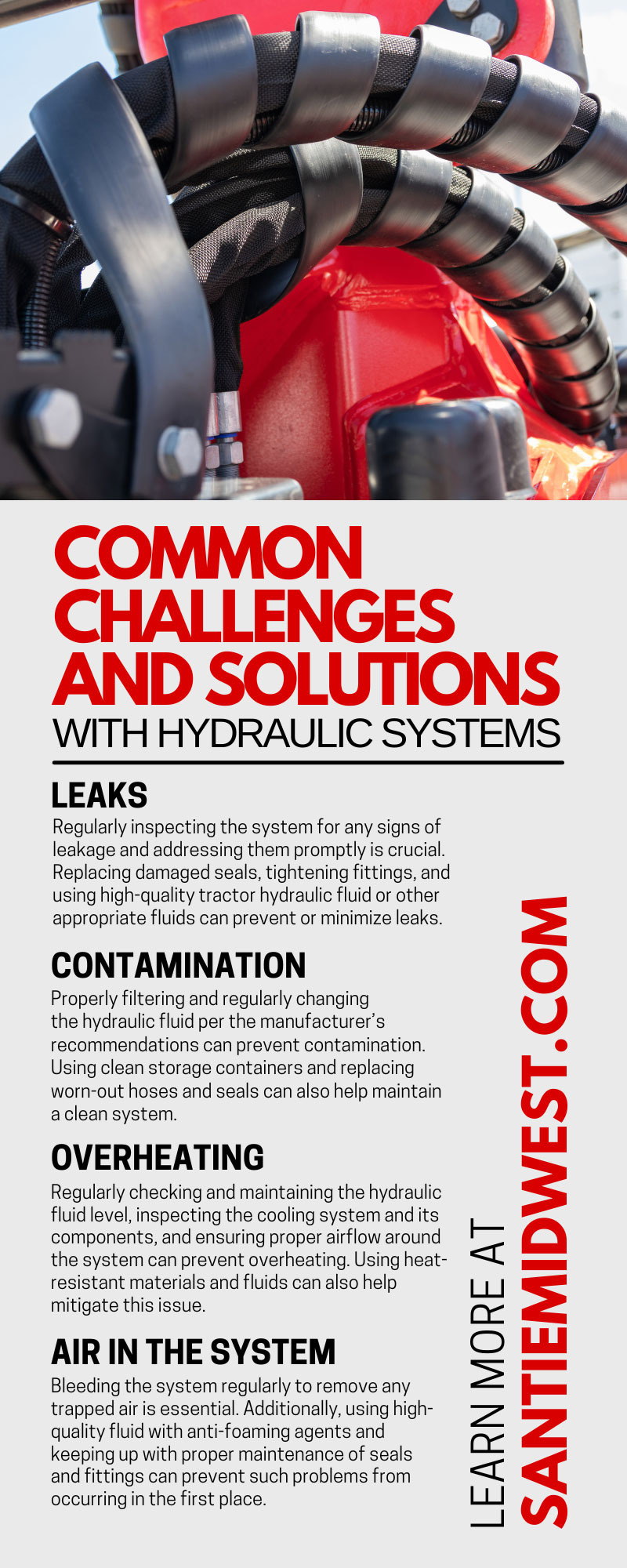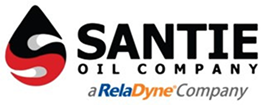Hydraulic systems are essential components of engines, responsible for powering critical functions such as actuators, cranes, and brakes. However, like any mechanical system, they can be prone to various challenges that can affect their performance and reliability. Explore 12 common challenges with hydraulic systems and some practical solutions to overcome them.
Importance of Hydraulics
Many modern technologies, including aircraft, pumps, and construction machinery, heavily rely on hydraulic systems because they can generate immense power and control with relative ease. Hydraulic systems offer a high power-to-weight ratio, which allows for smooth and precise operation, even under challenging conditions and heavy loads. They also offer excellent control, enabling operators to regulate the force and speed of the machinery effectively. However, it’s essential for owners, operators, and other personnel to know what to look for to ensure equipment stays in good condition.
Challenge 1: Leaks
Hydraulic fluid leaks are a common problem that can occur due to wear and tear, faulty fittings, or damaged seals. These leaks not only result in the loss of expensive hydraulic fluid but also compromise the system’s efficiency and safety.
Regularly inspecting the system for any signs of leakage and addressing them promptly is crucial. Replacing damaged seals, tightening fittings, and using high-quality tractor hydraulic fluid or other appropriate fluids can prevent or minimize leaks.
Challenge 2: Contamination
Contamination of hydraulic fluid with dirt, debris, or water can cause severe damage to the system’s components and affect its overall performance. This is a significant concern for equipment operators, as it can lead to expensive repairs and downtime.
Properly filtering and regularly changing the hydraulic fluid per the manufacturer’s recommendations can prevent contamination. Using clean storage containers and replacing worn-out hoses and seals can also help maintain a clean system.
Challenge 3: Overheating
Heat is a common byproduct of hydraulic systems’ operation, but excessive heat buildup can cause significant damage to the system. Overheating can result from factors such as high ambient temperatures, low fluid levels, or a malfunctioning cooler.
Regularly checking and maintaining the hydraulic fluid level, inspecting the cooling system and its components, and ensuring proper airflow around the system can prevent overheating. Using heat-resistant materials and fluids can also help mitigate this issue.
Challenge 4: Air in the System
The presence of air bubbles or foam in the hydraulic fluid can cause sponginess and erratic behavior in the system, affecting its efficiency and safety.
Bleeding the system regularly to remove any trapped air is essential. Additionally, using high-quality fluid with anti-foaming agents and keeping up with proper maintenance of seals and fittings can prevent such problems from occurring in the first place.
Challenge 5: Cavitation
Cavitation occurs when the hydraulic fluid vaporizes due to extreme pressure drops, resulting in tiny bubbles that implode and cause damage to the system’s components. This is often a result of inadequate or poorly designed pumps.
Regularly inspecting and maintaining pumps, ensuring proper fluid flow, and using suitable fluid for the system’s operating conditions can prevent cavitation. Upgrading to more efficient pumps can help prevent this issue.
Challenge 6: Corrosion
Corrosion is a significant concern for hydraulic systems as it can cause severe damage to the components and lead to leaks or failures. Corrosion can form due to various factors, such as moisture, contaminants, or inadequate protection.
Regularly cleaning the system, inspecting for any signs of corrosion, using corrosion-resistant materials and coatings, and maintaining proper storage conditions can prevent this issue. Replacing worn-out components and using quality hydraulic fluid is essential to avoid premature degradation of the materials.
Challenge 7: Vibration
Vibration from engine operation or other sources can cause damage to hydraulic system components and lead to premature wear or failure. It can also affect the performance and accuracy of system controls.
Properly securing and isolating the system from sources of vibration, regularly checking for loose fittings or components, and using vibration-resistant materials can prevent this issue. Ensuring proper alignment of all moving parts can also help reduce vibration.
Challenge 8: Pressure Spikes
Sudden and extreme pressure spikes can cause severe damage to a hydraulic system’s components, leading to leaks, failures, or safety hazards. Factors such as valve malfunctions or pump cavitation can cause these issues.
Properly maintaining and regularly inspecting valves and pumps, ensuring proper fluid flow, and using suitable fluid for the system’s operating conditions can prevent pressure spikes. Installing pressure relief valves and surge suppressors is essential for promoting optimal performance.
Challenge 9: Seal Failure
Seals are crucial components of a hydraulic system, and their failure can lead to leaks, contamination, or loss of control. Seal failure is often due to factors such as wear and tear, extreme temperatures, or inadequate lubrication.
Properly maintaining and regularly inspecting seals for any signs of wear or damage is crucial. Using quality seals and ensuring proper lubrication can also help prevent seal failure. Additionally, replacing worn-out seals promptly can prevent further damage to the system.
Challenge 10: Misalignment
Misaligned components in a hydraulic system can cause excessive wear, leaks, or failures. It is often a result of improper installation or poor maintenance.
Properly aligning all components and regularly checking for any misalignments during routine maintenance can prevent this issue. Using the proper tools and following manufacturer recommendations for installation will help ensure everything is aligned correctly from the start.
Challenge 11: Wear and Tear
As with any mechanical system, wear and tear are inevitable for hydraulic systems. However, excessive or uneven wear can lead to premature failures, affecting the system’s reliability and safety.
Regularly inspecting and maintaining all hydraulic system components is essential for preventing excessive wear. Using quality materials, applying lubricants, and aligning all parts correctly will ensure equipment lasts for as long as possible.
Challenge 12: Improper Fluid Choice
Using the wrong type of hydraulic fluid can cause severe damage to the system’s components and lead to leaks, malfunctions, or safety hazards. It’s crucial to use fluid that meets the manufacturer’s specifications for the system.
Properly identifying and using the recommended hydraulic fluid for your system, regularly checking and maintaining fluid levels, and replacing fluids according to the manufacturer’s recommendations can prevent this issue. Flushing the system before switching to a different type of fluid will ensure contaminants don’t infiltrate the system.
Keep Your Hydraulic Equipment Running Efficiently
Hydraulic systems are critical for heavy equipment operations, and addressing issues promptly ensures their efficiency and reliability. Following these recommendations can go a long way in preventing issues and keeping the system in top condition. As always, consult a certified mechanic regarding any problems or concerns to maintain the safety and performance of your hydraulic system.
Understanding the most common challenges and solutions with hydraulic systems can make a huge difference in your day-to-day operations. By keeping up with the latest information, you’ll have your hydraulic system running smoothly for years to come!


